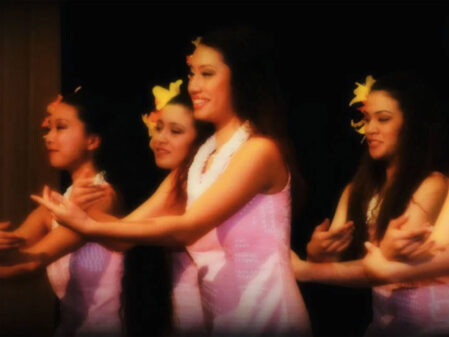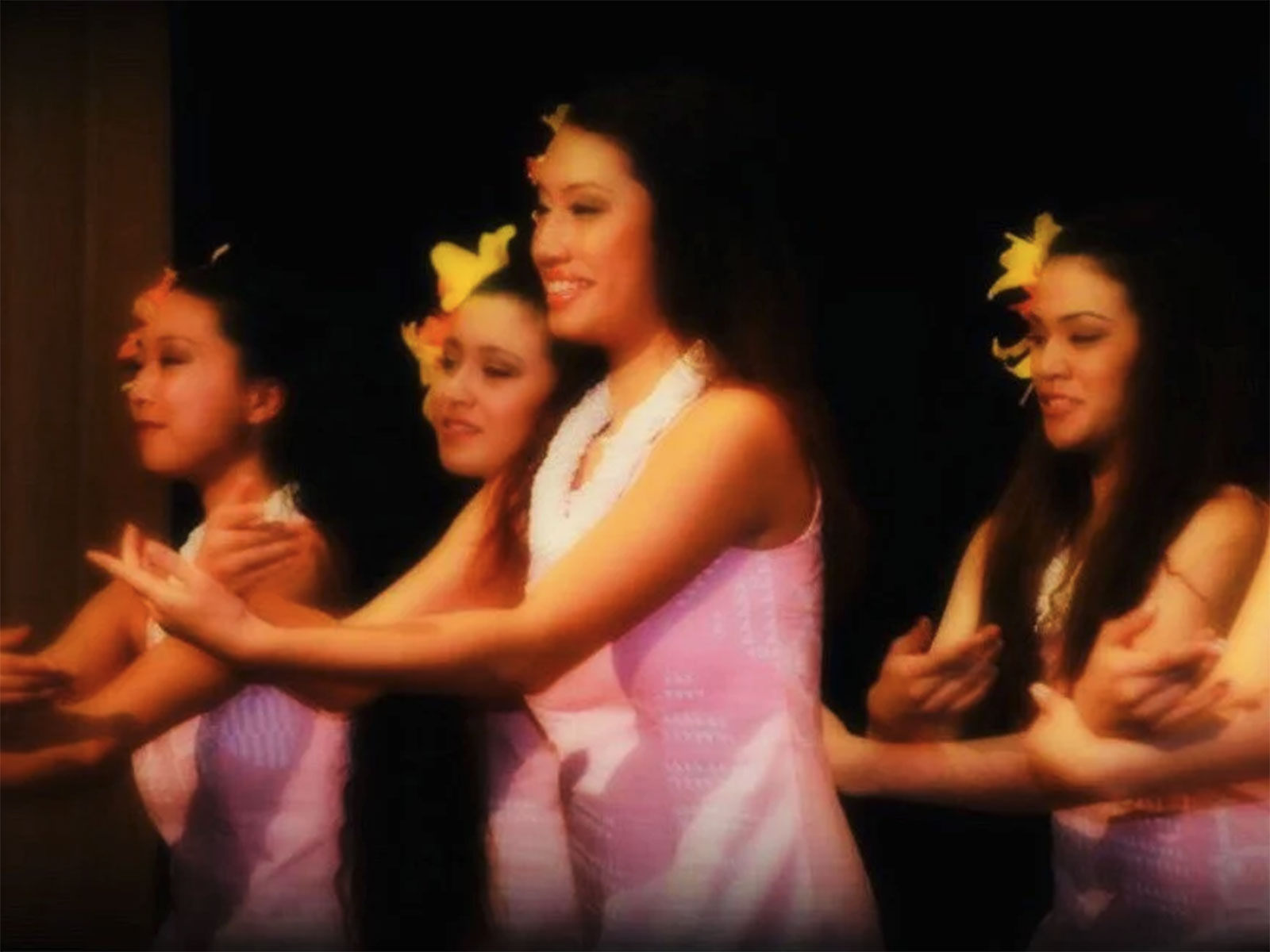Hawaiian Hula | Carson, CA
Hālau ‘O Lilinoe is one of the foremost halau (hula schools) in the mainland United States, dedicated to presenting hula kahiko (“ancient hula”), the traditional dance and chant of the Hawai’ian Islands. Beloved for its graceful and powerful performances, the school also celebrates hula as a means of preserving Hawai’ian history, values, and folkways through the passing down of traditions from one generation to another.
Hālau ‘O Lilinoe springs from a rich hula lineage. Founder Sissy Kaio learned the traditions from her mother and from her great aunt, Mary K. Pukui, a noted Hawai’ian historian who translated many of the old chants and wrote the first Hawaiian-English dictionary. After relocating to California, Sissy founded this halau over 40 years ago, bringing the ‘ohana (family) spirit of the hula tradition to her new hometown. Today the legacy of Hālau ‘O Lilinoe is carried on by Sissy’s daughter, Annette Lilinoe Kaio. A kuma hula (hula master) in her own right, Annette trained with her mother and studied with the noted teacher Dr. Taupouri Tangaro in Hawai’i. Under Annette’s direction, Hālau ‘O Lilinoe today is comprised of over 100 men, women, and children from 4 to 75 years old.
Hālau ‘O Lilinoe performs a repertoire that draws upon centuries of Hawai’ian history and legend. The oldest chants of the hula kahiko are dedicated to the four Polynesian gods, while later compositions pay tribute to Hawai’ian deities such as the volcano goddess Pele, celebrate the deeds of Hawai’ian chiefs, or describe the sacred places and cultural traditions of the islands. By sharing these beautiful hula kahiko, members of the halau nourish the roots of their culture and invite new audiences into its welcoming embrace.
The technical virtuosity of the dancers and musicians creates a mesmerizing vehicle for these stories. The halau’s specialty is the Aiha’a style, a highly energetic, bent-knee, flat-footed, low-postured, vigorous dance. Precisely prescribed movements performed with utmost concentration allow the dancers to interpret the poetry of the sonorous ancient chants. In standing dances, the chanter beats an accompaniment on either the pahu (sharkskin-covered drum) or ipu heke (double-gourd drum). In seated dances, the dancers recite the chant and also play indigenous percussion instruments such as ‘uli’uli (gourd rattles), kala’au (pear-like sticks), and pu’ili (slit-bamboo rattles).
As founder Sissy Kaio has said of the halau, “We make wherever we live our own Hawai’i”—and over the festival weekend, they will bring the spirit of Hawai’i to Montana.


